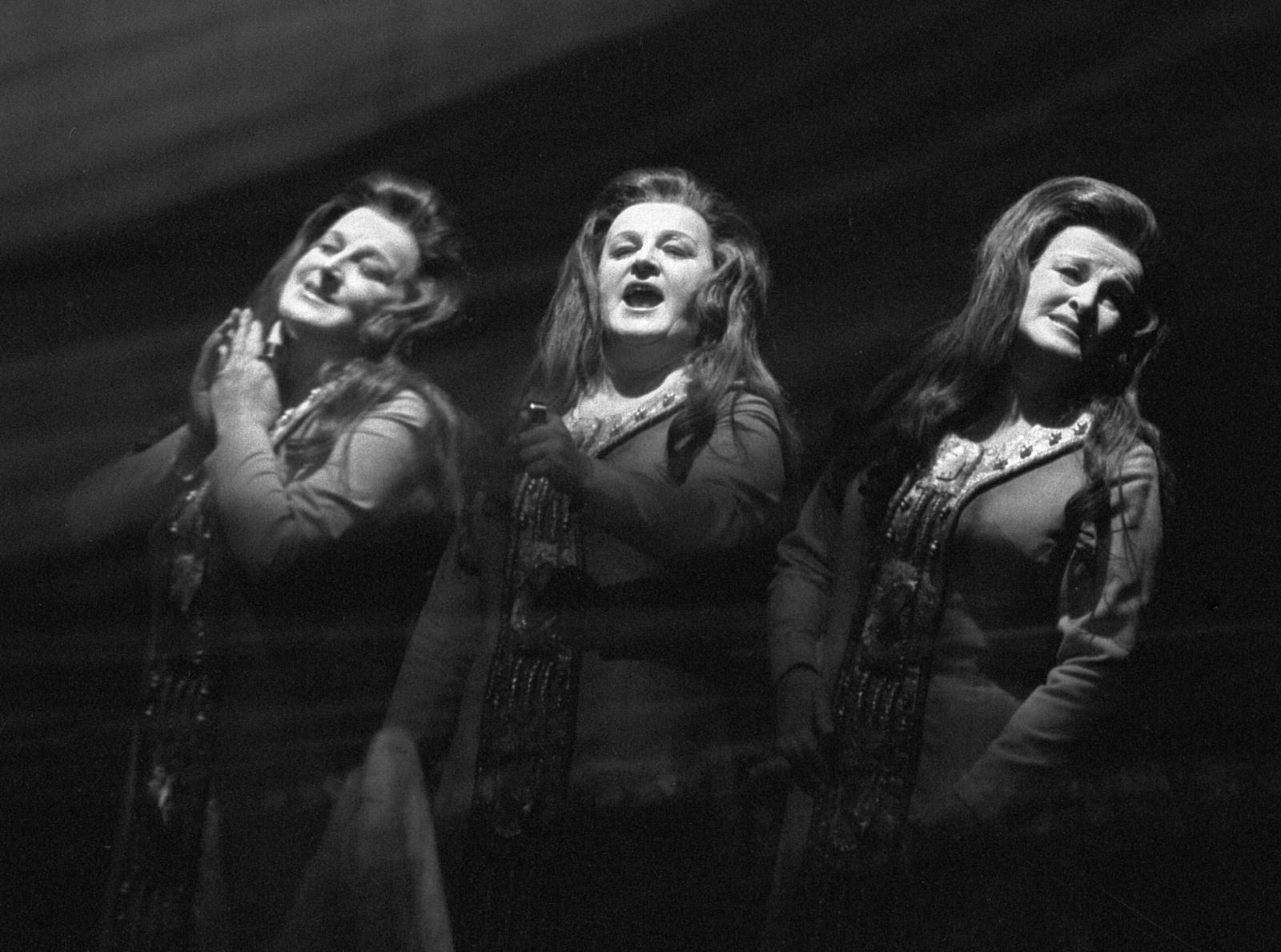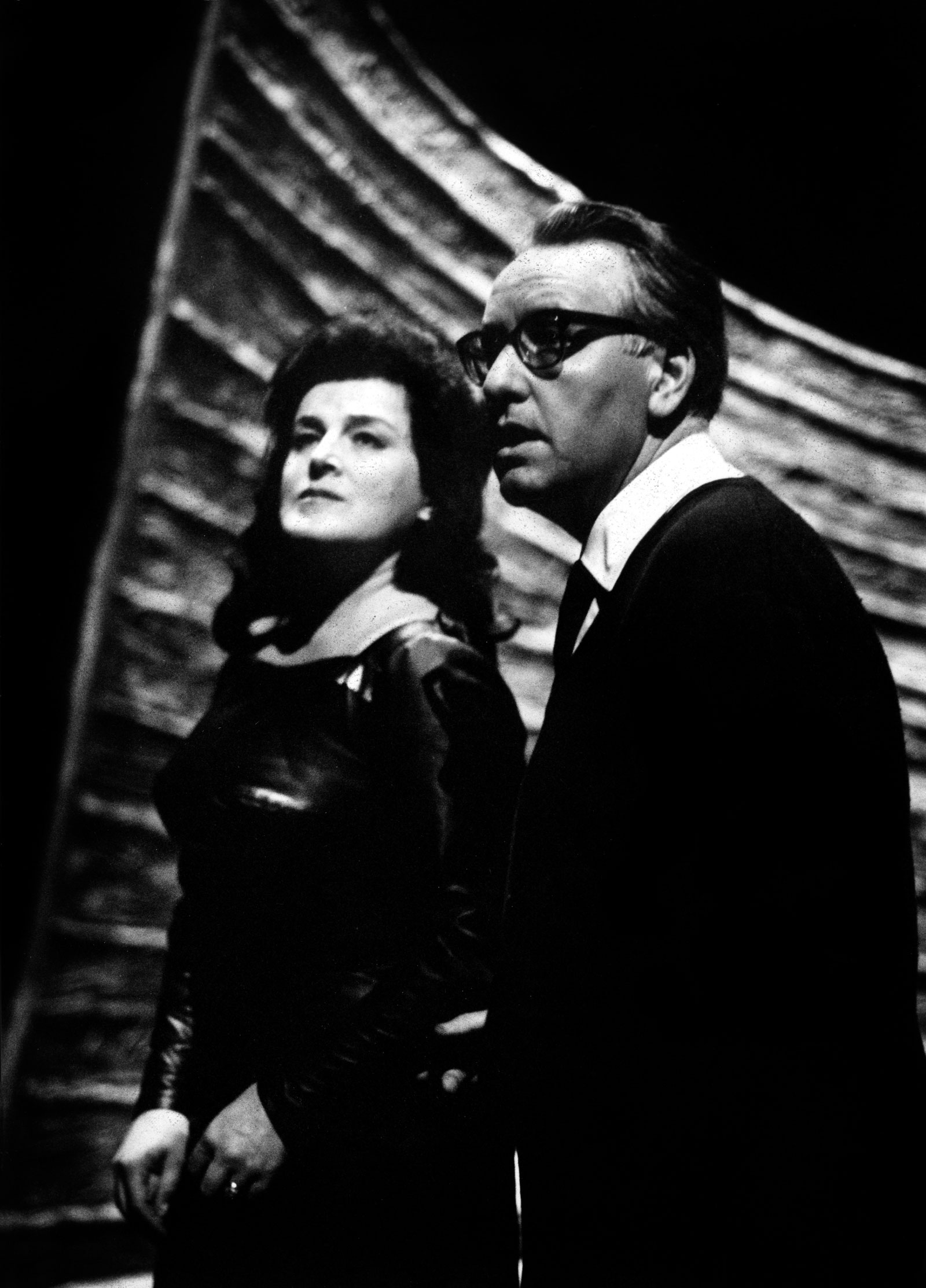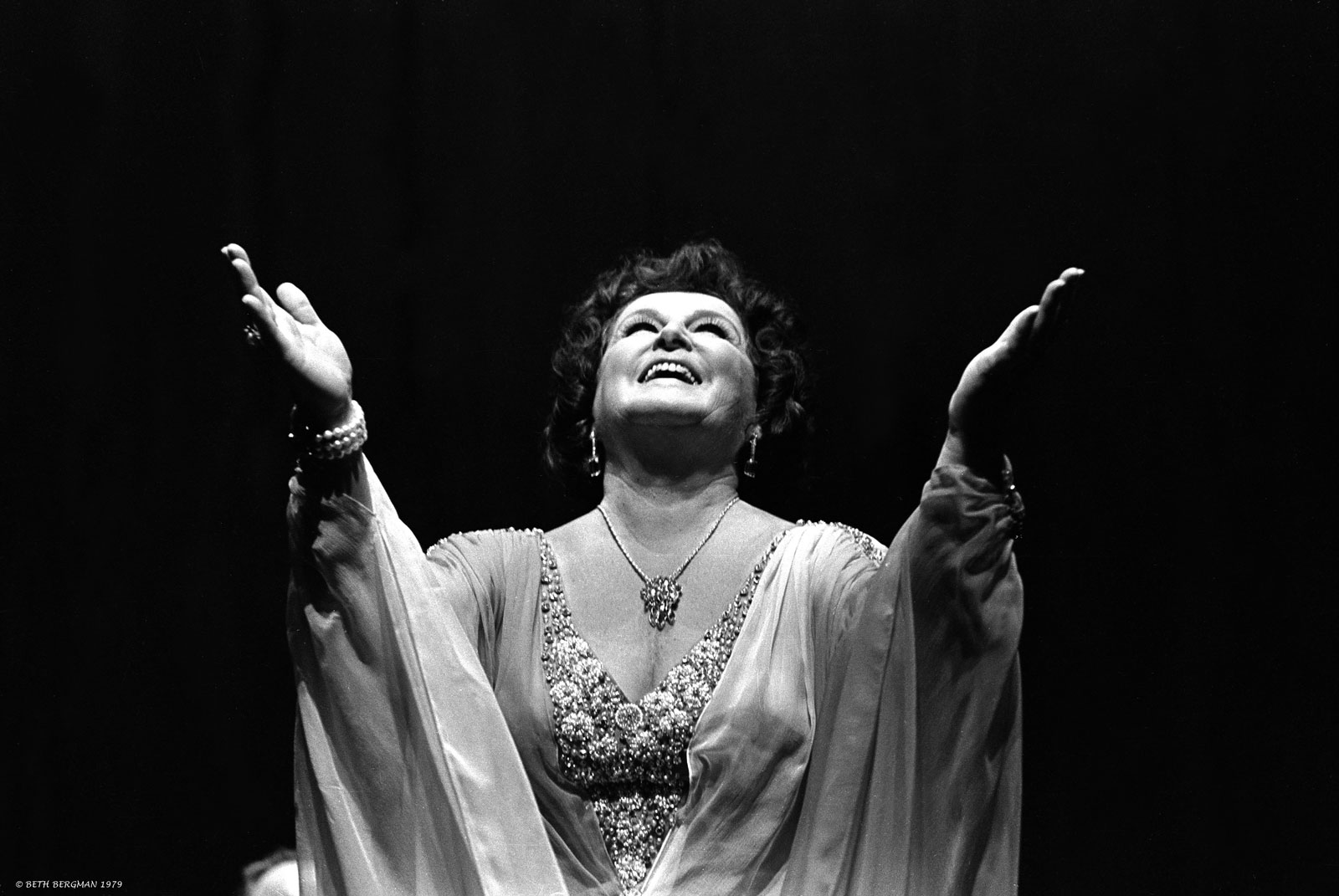You know you’re getting old when your children turn forty, but what about when an idol of one’s youth has a hundredth anniversary? So vivid are my memories of the incomparable Swedish soprano Birgit Nilsson (1918–2005)—by general consent the foremost female Wagner exponent in the second half of the twentieth century and my favorite of all the artists I’ve ever seen in live performance—that it came as a shock to realize that this year is her centennial.
Several new releases commemorate the milestone, including two blockbuster CD sets: a seventy-nine-disc, two-DVD compendium, La Nilsson: The Complete Decca, Philips, and Deutsche Grammophon Recordings, with twenty-seven full-length operas and two Ring cycles; and a thirty-nine-CD compilation, Birgit Nilsson: The Great Live Recordings, which offers a further dozen complete operas plus several concerts. A lush photo album, Birgit Nilsson 100: An Homage, revisits her glory years at the zenith of the international opera world’s postwar resurgence. And Thomas Voigt and Wolfgang Wunderlich’s hugely enjoyable documentary film, Birgit Nilsson: A League of Her Own, perfectly captures their subject’s irresistible combination of down-to-earth vitality and artistic sublimity.
I was lucky to attend many unforgettable Nilsson evenings during her peak decades, among them an overwhelming 1974 concert version of Richard Strauss’s Salome with the Chicago Symphony Orchestra conducted by Georg Solti, which, with her in the incendiary title part, nearly blew the roof off Carnegie Hall. Nonetheless, I understand that even the loftiest vocal reputations can diminish posthumously, no matter how extensive and technically excellent a singer’s audio legacy. And if there was ever a star you had to hear in person to believe, it was surely Nilsson.
That I did for the first time at a Metropolitan Opera production of Turandot at Philadelphia’s Academy of Music in 1961, back when the Met regularly took to the road to build national support for the company and its Saturday live broadcasts. In addition to Nilsson in the title role, that impossibly stellar cast featured Franco Corelli as Calàf; Leontyne Price as Liù; and at the podium Leopold Stokowski (whom I already knew from Walt Disney’s Fantasia)—not a bad introduction to opera for a twelve-year-old.
I can clearly remember being pushed back in my seat by Nilsson’s voice at full throttle—its sheer projectile force has been often and aptly compared to that of a steel blade—as she sailed through Turandot’s fearsomely high tessitura (the range within which most of a part’s notes lie.) But no matter how ravishing Cecil Beaton’s chinoiserie décor and costumes were, the cast’s acting, not excluding Nilsson’s, was so stilted that it reminded me of a puppet show. However, by the time I next encountered her, at the Met in New York nine years later (in the same Turandot staging, opposite a youngster named Plácido Domingo), she had undergone a remarkable transformation and grown into a fully developed actress of extraordinary communicative gifts.
This was owed primarily to her close collaboration in the interim with the greatest opera director of the immediate postwar period, Wieland Wagner, a grandson of the master and co-director with his younger brother, Wolfgang, of the Bayreuth Festival. The rivalrous siblings’ stripped-down, emotionally penetrating interpretations—they did not collaborate but alternated in their productions for fifteen years, until Wieland’s death, in 1966—rehabilitated and revivified the Wagner repertoire after its dark associations with Nazi ideology. This new approach became known as Regietheater (director’s theater), in which outdated histrionic conventions were swept away to reveal the inner meanings of a work. At a time when the general public still thought of Wagnerian heroines as cartoon battleaxes in horned helmets and iron brassières, Wieland Wagner helped Nilsson comprehend and portray these women as richly nuanced archetypes, at once modern and eternal.
Her big dramatic breakthrough came with his landmark 1962 Bayreuth mounting of Tristan und Isolde, conducted by Karl Böhm, recorded live at the festival four years later, and part of the new La Nilsson omnium-gatherum. In her memoir, La Nilsson: My Life in Opera (2007), she recalled that although she’d done Isolde eighty-seven times before, she put herself entirely in the director’s hands. “I have the intention of forgetting all the interpretations up to now,” she wisely told him, “and working with you as though from the beginning.” As she continued:
It was, in many ways, a new Isolde that saw the light of day…. Wieland could bring out the most varied characterizations through the mere suggestion of a gesture. The complicated psychological problems he explained through contemporary, irreverent comparisons, which kept us all in a good mood… Before, I always played Isolde in the first act as filled with hate and seeking revenge. But now the role received a new dimension… Isolde’s longing was brought out in her voice, her body language, and her facial expressions.
An inherent theatrical flaw in this composer’s music dramas is that they incorporate so little physical action, which prompted a tradition of singers’ standing still as they raised and lowered their arms to semaphore feelings. When someone did move, it tended to be expended in one grand gesture before a deadening stasis returned. Wieland Wagner taught Nilsson how to break down her big motions into a seamless series of small ones that registered much more effectively with viewers, which I witnessed in her appearance in the Met’s legendary January 30, 1974, Tristan opposite the Canadian Heldentenor Jon Vickers (the only time they performed together in that work in the US).
Advertisement
In Act I, Isolde taunts Tristan into drinking what she thinks is poison but is really a love potion. As the director August Everding staged the scene, Nilsson slowly circled the wary hero with a sinuous, feline grace, at once seductive and menacing as she brandished the doctored chalice. Although this sturdily built farmer’s daughter was hardly a sexpot, you’d never have known it from the captivating way in which she held her body and exuded a palpable erotic allure that her hapless prey seemed all too ready to die for.
One particular line-reading of Nilsson’s sticks with me after all these years, and happily it’s preserved on the 1966 Bayreuth Tristan (my desert island discs par excellence). In Isolde’s long Act I narrative, she relates how her passion for Tristan was first sparked by compassion as she nursed the wounded knight back to health, even though he was a foe of her people, had killed her fiancé, and hid behind an assumed name. In a meltingly plangent passage, Seines Elendes jammerte mich (his misery tormented me)—which you can listen to here at 30:15—Nilsson’s tender, hesitantly shaded phrasing conveys everything about the mysterious wellsprings of irrational, unconditional love.
For those who considered her merely a freakish vocal phenomenon—a foolproof high-D-flat machine with the stamina (and, as she quipped, comfortable shoes) for arduously long Wagner marathons—I would refer them to this single detail as proof to the contrary. Yet her discography is studded with many such examples of the insights she gained as she steadily grew into a towering vocal actress.
I met Nilsson only once, in the 1970s after a non-singing event in New York, and although she looked ten feet tall onstage, I was startled to discover that she was actually only five-feet-six (a fact recently confirmed for me by her close friend Peggy Tueller, a Met administrative secretary who wrote the afterword to the autobiographical La Nilsson). As I scrutinized Nilsson—then nearly sixty—close-up, I wondered if her stupendous vocal production was a result of her barrel-shaped upper body and dowager’s hump, though I suspect the latter was related to her exceptionally large thoracic cavity rather than the usual osteoporosis.
Physical attributes aside, Nilsson’s inexhaustible work ethic and consummate professionalism were rock-solid, and affected everything from her renowned business acumen to her crystalline diction. This seasoned trouper’s unshakable determination was on full display after she dislocated a shoulder in a fall when stage-set stairs collapsed beneath her during a dress rehearsal for a new Met Götterdämmerung in 1974. That accident landed her in the hospital for four days and made front-page news. Her fans remained in a frenzy of anticipation until the première, at which, to our enormous relief, no Met spokesperson stepped before the curtain to announce a last-minute cast change.
When Nilsson, as Brünnhilde, made her first entrance (with Jess Thomas as Siegfried)—her right arm in a sling partly concealed by a cape, her facial bruises covered with extra-heavy makeup—the auditorium erupted in the most thunderous ovation I have ever heard. Not only did she make it all the way through the grueling five-and-a-half-hour performance, but did so with a blazing intensity right up to Brünnhilde’s apocalyptic Immolation Scene, her transcendent valedictory.
At that instant, she established the same mood of uncanny stillness and pinpoint focus I’d experienced with her several times before—most notably in Isolde’s climactic Liebestod at the end of Tristan—and, for me, the vast opera house that surrounded us began to melt away. I used to call that rare and exalted moment “Alone at Epidaurus,” after the ancient Greek amphitheater famous for its acoustics, where I could imagine some equally committed artist holding listeners in similar thrall, millennia before Birgit Nilsson claimed her own indelible place at the center of a stage beyond time.
Advertisement





